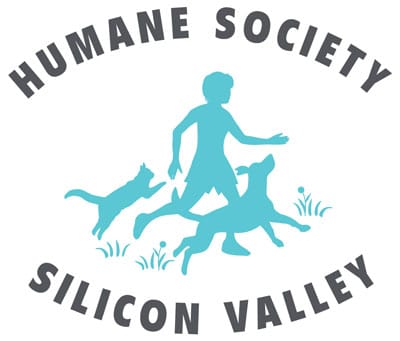We are dedicated to shaping the future of care for homeless and at-risk animals. By increasing the pipeline of talent in animal sheltering and empowering the sheltering community, we will all elevate our level of care for shelter animals.
Shortage of Veterinary Staff
The animal welfare sector is suffering due to the national shortage of staffing at all levels. Not enough people are entering the field and many are leaving it altogether. Shelters are doubly impacted. Not only is there not enough medical staff to care for animals, but the lack of access to veterinary care is one of the top risk factors for animals being surrendered to shelters.
Increasing the Pipeline of Veterinary Staff
Increasing the pipeline of veterinary staff is our primary goal to address the shortage that is impacting shelters all over the country. We focus on educating veterinary interns and externs and investing in programs that encourage more students to enter the veterinary field. Each year, veterinary students are invited to HSSV to learn from our Medical team and encourage them to consider a future in shelter medicine.
According to a recent MARS Veterinary Health study, nearly 41,000 additional veterinarians and an additional 59,000 credentialed veterinary nurses/technicians will be needed to meet the needs of companion animals by 2030.
“I can’t say enough great things about my experience as a veterinary student extern at Humane Society Silicon Valley. It was one of the highlights of my clinical year and I hope more students are afforded the same opportunity.
From honing my surgical skills to working up common (and not-so-common) cases seen in animal shelters, the staff encouraged my involvement and I felt like I was already part of the team. I only hope I can be an amazing doctor one day, just like all of the veterinarians at HSSV.”
-Veterinary Extern, funded by Maddie’s Fund
Lack of Standards of Care
There is very little oversight of more than 4,800 sheltering organizations in the United States. The wide range of purposes and types of animals served is reflected in an array of standards and operational processes. There is no requirement to follow any form of national standards of care, and sheltering organizations are not governed by overarching laws or regulations.
Becoming a Model Shelter

CAT CAGES WITH A “PORTAL” CUT THROUGH THEM, AS SPECIFIED IN THE GUIDELINES.
In 2010, the Association of Shelter Veterinarians (ASV), comprised of a deeply passionate group of veterinarians and experts, published their Guidelines for Standards of Care in Animal Shelters. It was a voluntary set of over five hundred guidelines designed to elevate the practices and protocols in animal shelters with a goal of eliminating the suffering and needless death of homeless pets.
Dr. Cristie Kamiya, Chief of Shelter Medicine at HSSV, was working on her Shelter Medicine residency at UC Davis when the guidelines were published, and was hired at HSSV soon after.
Under her recommendation and supervision, HSSV made the decision to attempt to formally complete all 543 guidelines for standards of animal care. If completed, HSSV would be the first ever shelter to do so. We would be the first Model Shelter.

Dr. Cristie Kamiya and Dr. Kate Hurley, one of the co-authors of the ASV guidelines
Dr. Kamiya and our team focused on making changes that would decrease animals’ length of stay in our shelter in order to decrease disease, stress, and behavior issues attributed to longer lengths of stay. Housing and enrichment protocols were updated, and we wrote new protocols for cleaning, for behavior, and for animal care. Being first meant such documents didn’t yet exist — so we created them. The process took almost two years of work across all departments.
In 2017, the ASV team certified that HSSV had met all 543 guidelines. We were the first shelter in the world to do so.
Now, more than a decade after they were first published, the guidelines are receiving an update. This time, Dr. Kamiya is on the ASV team responsible for researching, reviewing, and updating the guidelines with new information we’ve learned about shelter medicine since the guidelines were first published. “It’s been really cool to see the evolution of shelter medicine and the lifesaving that’s possible,” says Dr. Kamiya. “For us to be part of the forefront of the innovation in shelter medicine and teaching others is amazing.”
Scaling our Impact
Our team continues to update our own standards of care, incorporating best practices from other fields. We have seen an increase in animals with significant behavior challenges entering our shelter. Our Behavior Team looked to the technology sector for inspiration for how we could better serve these animals. By applying processes borrowed from technology and business sectors, the team has shifted from being the primary team focused on reducing stress and tackling behavior challenges to teaching all of our staff and volunteers how to support the emotional wellbeing of animals in our care. By empowering our staff, the Behavior Team now has the capacity to serve more of our adopters after bringing home their new pet. Not only have we improved care for animals in our shelter but also improved the lives of animals in homes, keeping them from re-entering the shelter.
Our goal is to help other shelters struggling with behavior challenges in their shelters by teaching them our new processes and how to empower their staff and volunteers.
Limited Resources
Shelters across the country are impacted by limited resources. Lack of adequate staffing, physical space to hold animals, supplies, and equipment can prevent shelters from reaching their lifesaving potential. The fragmentation of animal shelters creates a disparity in resources, often resulting in shelters serving the largest numbers of animals having the fewest resources.
Increasing Lifesaving Together
We have committed to our partner shelters that we will not only transfer in animals to prevent overcrowding, but to be there as a resource when they need us most. Our goal is to help them address the root causes of overpopulation.
When one of our partners had an outbreak of Canine Distemper among their puppy population, we rushed to help. Distemper can be highly dangerous to unvaccinated animals, and is very contagious in a shelter environment. We sent a veterinary team to the Central Valley organization to help them test and treat the sick puppies. The team also assisted in creating processes aimed at preventing future outbreaks. This is one example of how collaboration increases lifesaving. Through their partnerships, that Central Valley shelter has been able to maintain a save rate never imagined even five years ago.
Our Vision
We are dedicated to changing the game for shelters and rescues. Our vision is a world in which animal shelters across the country have the resources they need to save lives and provide a safe, healthy space for the animals in their care.
Shape the future of the sheltering community
Connect with us to find out how you can be a part of building the future.



